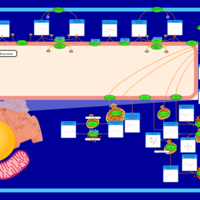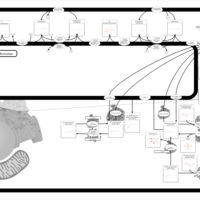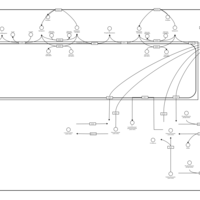| Description | Uridine diphosphate glucose, also known as UDP-glucose or UDP-alpha-D-glucose, belongs to the class of organic compounds known as pyrimidine nucleotide sugars. These are pyrimidine nucleotides bound to a saccharide derivative through the terminal phosphate group. Uridine diphosphate glucose exists in all living species, ranging from bacteria to plants to humans. Uridine diphosphate glucose is a key intermediate in carbohydrate metabolism. For instance, UDP-glucose is a precursor of glycogen and can be converted into UDP-galactose and UDP-glucuronic acid, which can then be used as substrates by the enzymes that make polysaccharides containing galactose and glucuronic acid. UDP-glucose can also be used as a precursor for the biosynthesis of sucrose, lipopolysaccharides and glycosphingolipids. Within humans, uridine diphosphate glucose participates in a number of enzymatic reactions. In particular, ceramide (D18:1/18:0) and uridine diphosphate glucose can be converted into glucosylceramide (D18:1/18:0) and uridine 5'-diphosphate through the action of the enzyme ceramide glucosyltransferase. In addition, glucosylceramide (D18:1/18:0) and uridine diphosphate glucose can be biosynthesized from lactosylceramide (D18:1/18:0) and uridine 5'-diphosphate through its interaction with the enzyme Beta-1,4-galactosyltransferase 6. |
|---|
| IUPAC Name | [({[(2S,3R,4S,5S)-5-(2,4-dioxo-1,2,3,4-tetrahydropyrimidin-1-yl)-3,4-dihydroxyoxolan-2-yl]methoxy}(hydroxy)phosphoryl)oxy]({[(3S,4R,5R,6S)-3,4,5-trihydroxy-6-(hydroxymethyl)oxan-2-yl]oxy})phosphinic acid |
|---|
| Traditional Name | {[(2s,3r,4s,5s)-5-(2,4-dioxo-3h-pyrimidin-1-yl)-3,4-dihydroxyoxolan-2-yl]methoxy(hydroxy)phosphoryl}oxy[(3s,4r,5r,6s)-3,4,5-trihydroxy-6-(hydroxymethyl)oxan-2-yl]oxyphosphinic acid |
|---|
| InChI Identifier | InChI=1S/C15H24N2O17P2/c18-3-5-8(20)10(22)12(24)14(32-5)33-36(28,29)34-35(26,27)30-4-6-9(21)11(23)13(31-6)17-2-1-7(19)16-15(17)25/h1-2,5-6,8-14,18,20-24H,3-4H2,(H,26,27)(H,28,29)(H,16,19,25)/t5-,6-,8-,9-,10+,11-,12-,13-,14-/m1/s1 |
|---|
| Pathways | | Name | SMPDB/PathBank |
|---|
| Starch and sucrose metabolism |    | | Nucleotide Sugars Metabolism |    | | Galactose Metabolism |    | | Starch and Sucrose Metabolism |    | | Galactosemia |    | | Metachromatic Leukodystrophy (MLD) |    | | Globoid Cell Leukodystrophy |    | | Gaucher Disease |    | | Lactose Synthesis |    | | Galactosemia II (GALK) |    | | Galactosemia III |    | | Fabry disease |    | | Krabbe disease |    | | Glycogen synthetase deficiency |    | | Glycogenosis, Type III. Cori disease, Debrancher glycogenosis |    | | Glycogenosis, Type IV. Amylopectinosis, Anderson disease |    | | Glycogenosis, Type VI. Hers disease |    | | Mucopolysaccharidosis VI. Sly syndrome |    | | Sucrase-isomaltase deficiency |    | | Congenital disorder of glycosylation CDG-IId |    | | GLUT-1 deficiency syndrome |    |
|
|---|